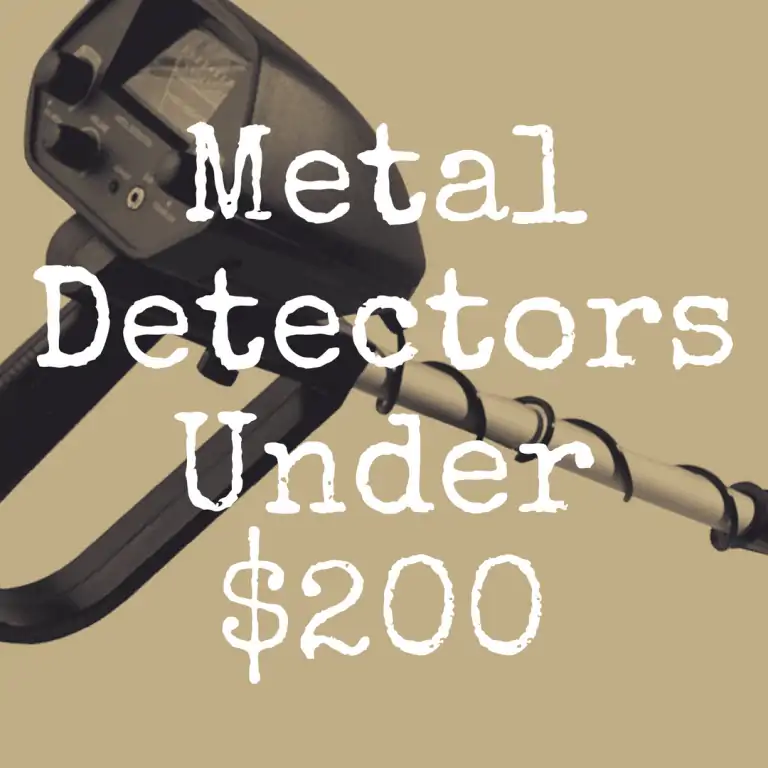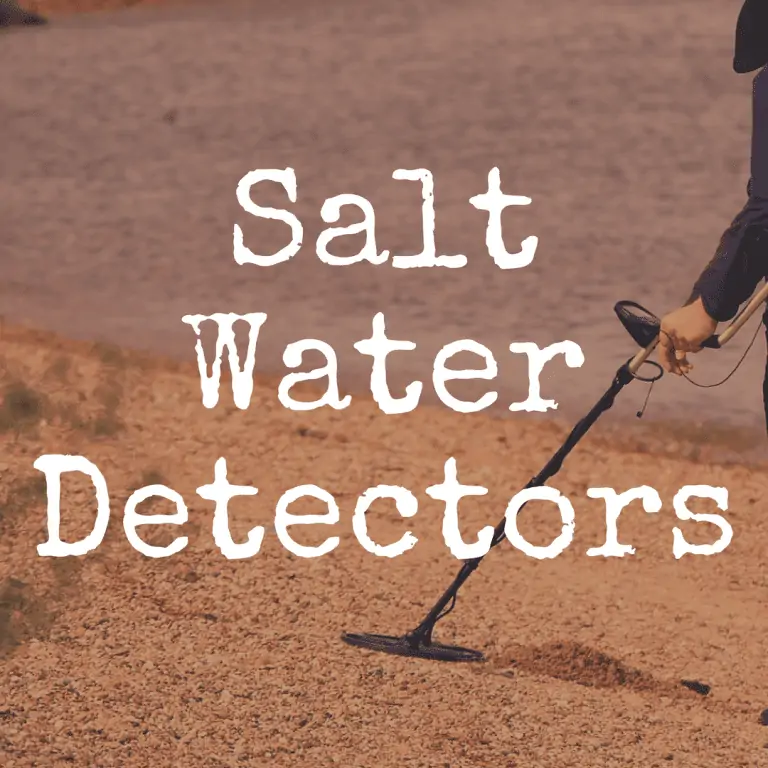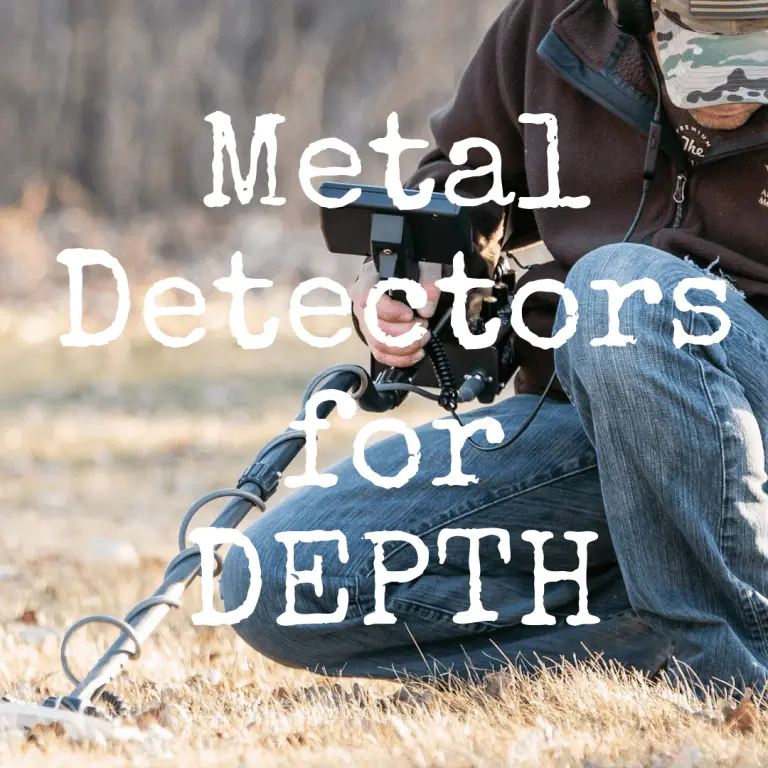Fisher vs Garrett Metal Detectors: What’s Best?
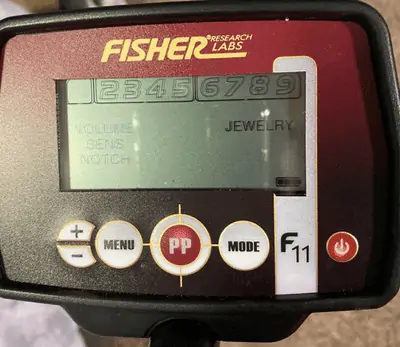
Fisher and Garrett are both leaders in the metal detecting world. Both have been in business for decades and both have multiple options for metal detectorists.
But, is one metal detector brand better than the other? We’ll help answer that question in today’s ultimate comparison.
To better help you, we’ve complied a table below which allows you to compare some of the top metal detectors on the market against one another, including detectors made by Fisher and Garrett.
| Photo | Model | Price | Features |
|---|---|---|---|
 | XP Deus Wireless | $$$ | 11” DD Coil |
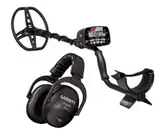 | Garrett AT Max | $$$ | Waterproof to 10 feet |
| Bounty Hunter TK4 Tracker IV | $ | 8” Waterproof Coil |
About Fisher
Fisher Research Labs was founded in 1931 by Dr. Gerhard R. Fisher. He was the first to receive a patent for the metal detector. Fisher was a German immigrant who studied electronics at the University of Dresden. He was a research engineer in Los Angeles in the 1920s and received the first patent for aircraft radio direction finders. Dr. Albert Einstein was familiar with Fisher’s work and stated that this technology would lead to worldwide use of radio direction finders.
The first detector was called the metallascope, or M-Scope. It was nothing like today’s metal detectors in that it was 2 wooden boxes containing copper coils, vacuum tubes, and other components. As increased demand for the M-Scope grew and Fisher’s patent rights were expiring, many competitors began producing detecting equipment.
Dr. Fisher retired in 1967, and Fisher labs continued to expand until 2006, when it was purchased by First Texas Holdings Corporation, who moved Fisher Labs from California to Texas. First Texas carries on the Fisher legacy of creating state of the art metal detectors with the latest technology.
Impressive Fisher metal detectors
Fisher’s F-Series is one of their most popular lines. It consists of the F11, F22, F44, F70, F75, F4, F5, and F19. This series contains a metal detector for just about all skill levels out there.
The Fisher F11 and Fisher F22 are great beginner detectors. Both are simple to use, have basic controls, and nothing too complicated. The F11 has 3 search modes, 9 segment visual Target-ID, 4 Tone Audio ID, 6 adjustable sensitivity and volume levels, and a 7” waterproof concentric search coil. It operates at a frequency of 7.69 kHz and weighs 2.3 pounds.
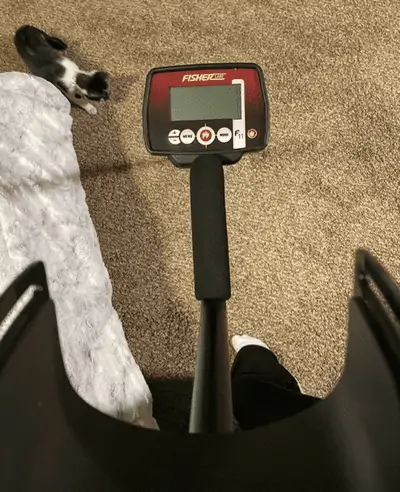
The F22 features numerical visual Target ID, Fe-Tone®, 9 segment Target ID, 4 search modes, a pinpointer, 10 levels of adjustable sensitivity, 20 levels of adjustable volume, and 4 Tone Audio ID. This model comes with a 9” waterproof concentric search coil and the control box is weatherproof. It operates at the same frequency as the F11 and has the same weight.
- You can read my full review of the Fisher F22 here.
The Fisher F44 has all the features of the F22 and F11, plus Ground Grab® ground balancing, iron identifier icon, 20 levels of adjustable sensitivity, 5 search modes and an 11” waterproof elliptical search coil. Like the F22, the F44 is weatherproof. The operating frequency and weight are the same as the F11 and F22.
- You can read my full review of the Fisher F44 here.
The Fisher F70 features advanced visual and audio Target ID. It has a larger LCD screen with numerical target ID, frequency shift, multiple audio tone ID, one touch notch, push button pinpointer, an upgraded 11” Double-D Bi-Axial search coil. The F70 operates at 13 kHz and is under 3 pounds.
The Fisher F75 has a large backlit LCD screen with numerical Target ID, magnetic mineralization bar graph, FASTGRAB™ ground balancing, rain cover, and 3 levels of FeTone®. This model lets users activate or deactivate DST Mode (Digital Shielding Technology) for greater electromagnetic interference suppression. This model has improved target separation, adjustable audio pitch, and an embedded serial number. The F75 operates at 13 kHz and weighs 3.5 pounds. It comes with an 11” waterproof elliptical search coil.
- You can read my full review of the Fisher F75 here.
The Fisher F4 has a good-sized LCD screen with numerical Target ID. It features high deep seeking auto tune with manual ground balance, 11 segment digital target ID, 4 tone Audio ID, one touch notch, and one touch pinpoint with numeric readout. The F4 operates at 5.9 kHz, has 4 search modes, and comes with an 11” waterproof bi-axial search coil.
- You can read my full review of the Fisher F4 here.
The Fisher F5 combines the best in analog and digital technology. It features visual target ID by category with numerical readout, frequency shift, target ID confidence bar graph, one touch notch, static pinpoint with pitch and depth reading, and threshold and gain adjustments. The F5 also has continuous ground mineralization readout and 4 tone audio ID. The F5 operates at 7.8 kHz and comes with a 10” waterproof elliptical search coil.
The Fisher F19 is one of Fisher’s best models. It is designed to conquer iron infested sites. The F19 features FeTone™, enhanced V-Break® tone discrimination, notch window with adjustable notch width, and a large, backlit LCD screen. The F19 features Ground Grab® ground balancing with manual override, continuous ground readout, and Fe3O4 graphic to indicate mineralization levels.
This model operates at a higher frequency than the rest of the F-Series, at 19 kHz, so it will work better on saltwater areas and when searching for gold than other models. It is still lightweight like all Fisher F-Series models at just 2.5 pounds.
Fisher also makes several Gold Bug metal detectors designed for prospecting. The Fisher Gold Bug 2 is one of the most sensitive gold detecting machines out there. It operates at 71 kHz, significantly higher than other models. This makes it great for finding small gold or fine gold jewelry. It does not have an LCD screen but is controlled by a series of knobs.
This model features dual control ground balance, iron discrimination mode, and deep target audio boost. It comes with either a 6.5” or 10” elliptical search coil and weighs just 2.9 pounds. The Gold Bug 2 can also be hip, or chest mounted.
One of Fisher’s most advanced metal detectors is the Fisher CZ-21 Quicksilver. The most unique feature of the Quicksilver is it is the only one designed as an underwater metal detector and is fully submersible up to 250 feet. This detector was designed to be used for diving, in salt or fresh water, or on dry land.
It features a dual frequency Fourier Domain Signal Analysis, V.C.O. non-motion pinpointing, easy manual ground grab, and high performance in mineralized soils.
The Quicksilver comes with either an 8” or 10” search coil and operates at 5 kHz and 15 kHz. It features large target alert, faint target audio boost, 3 tone audio target ID, and removable control housing for belt-mount. The control housing weighs 2.8 pounds, with the 8” coil the detector weighs nearly 6 pounds, and with the 10” coil, just over 6 pounds.
Fisher offers warranties on their metal detectors ranging from 2 to 5 years, depending on the model.
About Garrett
Garrett was founded by husband and wife Charles and Eleanor Garrett in the 1960s. They were determined to create a better metal detector than those on the market at the time. Garrett was the first manufacturer to eliminate oscillator drift with their independently operated search coils. This helped improved hunting efficiency and soon, their “Zero Drift” technology soon became the industry standard for all metal detectors.
Today, Garrett metal detectors is one of the industry’s leading manufacturers. They are known for their quality products and customer service. Garrett has consistently made metal detectors for all skill levels and have numerous models that are perfect for beginning detectorists. Garrett manufactures detectors for sport, school security, countermine, security, and government use. They are continually introducing new product and remain one of the top manufacturers of metal detectors.
Garrett Models
Garrett has several models that are popular among detectorists. The Ace line is one of their most successful and is tailored to beginning and intermediate detectorists. This line consists of the Ace 200, Ace 300, Ace 400, and the all new Ace Apex. The original Ace detectors are all under 3 pounds and operate on 4 AA batteries. Each detector has an adjustable stem so they can be tailored to suit all sizes of detectorists.
The Garrett Ace 200 is the least expensive model and the easiest to use for new detectorists. This detector comes with a 9” waterproof concentric search coil and operates at a frequency of 6.5 kHz. This is a fixed frequency metal detector and will not be particularly good at finding small gold or fine gold jewelry. The Ace 200 does not have pinpoint mode or iron audio but does have 4 segment discrimination and 3 search modes.
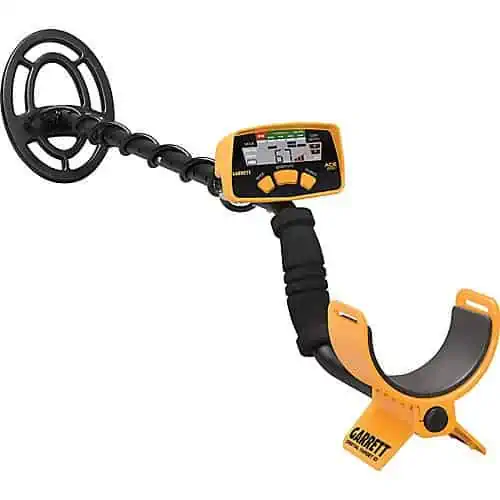
The Ace 300 and Ace 400 both have adjustable notch discrimination, 4 iron discrimination segments, 8 depth and sensitivity adjustments, and a pinpoint mode. Neither model has Iron Audio.
The Garrett Ace 300 has an operating frequency of 8 kHz and comes with a 10” waterproof concentric search coil. The Garrett Ace 400 has an operating frequency of 10 kHz and comes with an 11” waterproof Double-D search coil. Both detectors come with headphones, a coil cover, and an Ace Cover-up, which the Ace 200 does not come with.
- You can read my Garrett Ace 300 review here!
The Garrett Ace Apex is the newest model in the Ace lineup. This detector is different from the others mainly because it is a multiple frequency metal detector. The Ace Apex can also operate on 4 single frequencies of 5 kHz, 10 kHz, 15 kHz, and 20 kHz. It features wireless technology so it can be used with Bluetooth headphones, but also has the typical headphone jack for use with wired headphones.
The Ace Apex features 20 selectable notch discrimination segments, 8 iron discrimination segments, adjustable volume, and 6 search modes. One of the coolest features of this detector is it has separate modes for U.S. coins and international coins. It comes with 8 depth and sensitivity adjustments and automatic or manual ground balancing. As with all Ace detectors, the Apex is not fully submersible. It comes with an 11” waterproof Double-D Viper™ search coil and the stem is adjustable. This model is lightweight, as are all Ace models, at just 2.5 pounds and it comes with a rechargeable battery pack.
The Garrett AT line is more advanced than the Ace line and is most appropriate for intermediate or experienced metal detectorists. This line consists of the AT Pro, AT Gold, and AT Max.
The Garrett AT Max is the only detector in this line with wireless capabilities for use with Bluetooth headphones. The AT Max and AT Gold both have 44 iron discrimination segments and true All-Metal mode.
- You can read my Garrett AT Max review here.
The Garrett AT Pro has 40 iron discrimination segments and does not feature All-Metal mode. The AT Max has a backlight LCD screen and adjustable volume, while the AT Pro and AT Gold do not have these features. The AT Pro and AT Max have adjustable notch, while the AT Gold has preset notch.
- You can read my Garrett AT Pro review here.
The Garrett AT Gold has 3 search modes, the AT Max has 4 search modes, and the AT Pro has 6 search modes. All 3 detectors are very lightweight at around 3 pounds.
All models in the AT line have proportional audio, or Pro Audio. They have quick recovery speeds, iron discrimination mode, and 8 sensitivity and depth adjustments. All 3 models have automatic and manual ground balancing, digital target ID and pinpoint mode.
All AT models are completely waterproof up to 10 feet, which is something the Ace line does not offer. While the AT line is great for use in and around water, Garrett recommends that the AT Gold not be used in and around saltwater. The AT Pro operates at 15 kHz, the AT Gold at 18 kHz, and the AT Max at 13.6 kHz. All frequencies area adjustable.
One of the most advanced detectors in Garrett’s arsenal is the ATX. This is a pulse induction, or PI, metal detector meaning it offers the best depth and sensitivity over traditional very low frequency (VLF) metal detectors. The ATX emits 730 pulses per second, adjustable.
PI machines are inherently immune to saltwater and are great for highly mineralized soil conditions. The ATX is one of the best machines on the market for finding sub-gram gold and fine gold jewelry.
The ATX has Fast Track ground balancing to help eliminate electromagnetic interference and interference from ground mineralization. It features GroundTrack ground balancing, too, which continually adjusts for changing ground conditions in real time. This feature has 4 different adjustable settings. The ATX is fully submersible up to 10 feet.
PI machines are unique in that they do not require motion to detect objects. The ATX can be used in motion or stationary and features a pinpoint mode. Most PI machines are heavier than VLF machines, and the ATX is no different weighing in at 6.9 pounds.
All Garrett metal detectors come with a 2-year warranty.
Price Comparison of Fisher Models and Garrett Models
Fisher Models
- F11 – $159
- F22 – $289
- F44 – $399
- F70 – $799
- F75 – $699
- F4 – $449
- F5 – $549
- F19 – $899
- Gold Bug 2 – $900
- CZ-21 Quicksilver – $1,800
Garrett Models
- Ace 200 – $200
- Ace 300 – $300
- Ace 400 – $400
- Ace Apex – $500
- AT Pro – $650
- AT Gold – $750
- AT Max – $850
- ATX – $2,498
Comparison of Fisher Models and Garrett Models
Both Fisher and Garrett offer entry level metal detectors at comparable prices. The F11, F22, Ace 200, and Ace 300 all have similar features and similar prices. They are tailored specifically for beginning metal detectorists, so they will not have an overwhelming number of features.
The Fisher F11 is the base model of the Fisher F-series line and is great for kids of those who have never research metal detecting before. It is a turn on and go detector that is simple to use. The F22 and lower Ace models are also easy to use but have more features than the F11. The F22 is weatherproof, which has the advantage over the Ace line, but the Ace line has been known to detect slightly deeper.

The Garrett AT line is comparable to the remaining Fisher models, apart from the Quicksilver. Discrimination accuracy is better on the Fisher F75 than the AT Pro, and the F75 processes signals quicker. It also searches deeper than the AT Pro. The Garrett AT Pro has the advantage over the F75 in that it is better balanced and lighter weight.
The Fisher F19 operates at a higher frequency than the AT Max, making it better for finding lower conductive metals like gold. The Fisher Gold Bug 2 is not directly comparable to any of these Garrett models, as it operates at such a high frequency. It is in a class all its own and is a fantastic choice for anyone wishing to prospect.
The Fisher CZ-21 Quicksilver and Garrett ATX are also in classes all their own. The ATX is the only PI metal detector on this list and is perfect for all terrains and for finding all metals. PI machines are immune to the effects of saltwater and a great in highly mineralized soil conditions.
The ATX can be used in up to 10 feet of water so it is a great choice for river hunting, beach hunting, or shallow lake hunting. The Quicksilver is the only machine on this list that is submersible below 10 feet. This detector is perfect for anyone who wants to search shipwrecks or other deeply submerged areas.
Conclusion
In my opinion, there is no clear winner in this race. Fisher has been in operation since the 1930s and has continually been top tier. There is obviously a reason for that. Fisher offers multiple metal detectors for all skill levels, at all price points, and for all terrains. Their lower end metal detectors are perfect for beginning detectorists, and they offer models for more intermediate or advanced detectorists.
The Fisher Gold Bug is the perfect choice for prospecting and operates at one of the highest frequencies I have seen on the market. This detector will work extremely well in highly mineralized soils, which is common around gold patches. Remember, gold is typically found where it is already known to have been found. Just because you buy a gold detecting metal detector does not guarantee you will find gold if you are not in a gold producing area.
Garrett has been an industry leader since its inception. They are known for quality products and continue to innovate. Their Ace line is the perfect way for anyone trying to get into the hobby of metal detecting. The AT line is best for more intermediate or advanced detectorists. And the Garrett ATX is perfect for professional metal detectorists. PI machines are a lot more complicated than VLF machines, and it is important to understand how they operate prior to buying one.
Remember: you should always purchase a metal detector that is in line with your skill set. You will be setting yourself up for failure if you purchase one that is too difficult for your skills. As you advance as a metal detectorist, you can always upgrade to a more advanced machine. For those just starting out, stick to an easy to operate metal detector like the Fisher F11 or F22, or the Garrett Ace line. Both companies’ metal detectors are designed for newbies. They will not have too many features and settings, so they will not be as complicated. There is a lot of frustration involved with purchasing a metal detector that is well above your skill range.
As you advance, or if you are already an advanced detectorist, Fisher and Garrett both offer fantastic options for you, too. The remaining F-series models, the Gold Bug 2, the Quicksilver, the AT line, and the ATX are all for more intermediate or advanced detectorists.
These models will have more features and settings than the lower end models and will help you hone your craft. You will be able to detect more accurately with these machines, and you can adjust them as you see fit.
While I am unable to choose a winner between these 2 great companies, I can offer my favorite detectors from each company. In the entry level area, I would choose the Garrett Ace 300. It is middle of the road for entry level detectors but does not have a lot of complicated settings.
For intermediate detectorists, I would choose the Fisher F19. This detector is much more advanced than the lower end models, but not so difficult that those with some knowledge could not work it.
For professional metal detectorists, I would recommend the Garrett ATX. This has continually been one of my favorite metal detectors on the market. It is a great option and the only PI machine in our lineup. For divers, I would recommend the Quicksilver, not just because it is the only detector on here that can be submerged deeply, but because it has all the features a shipwreck diver looks for in a metal detector.
If you enjoyed this article, we encourage you to “like” our brand new Facebook page!
